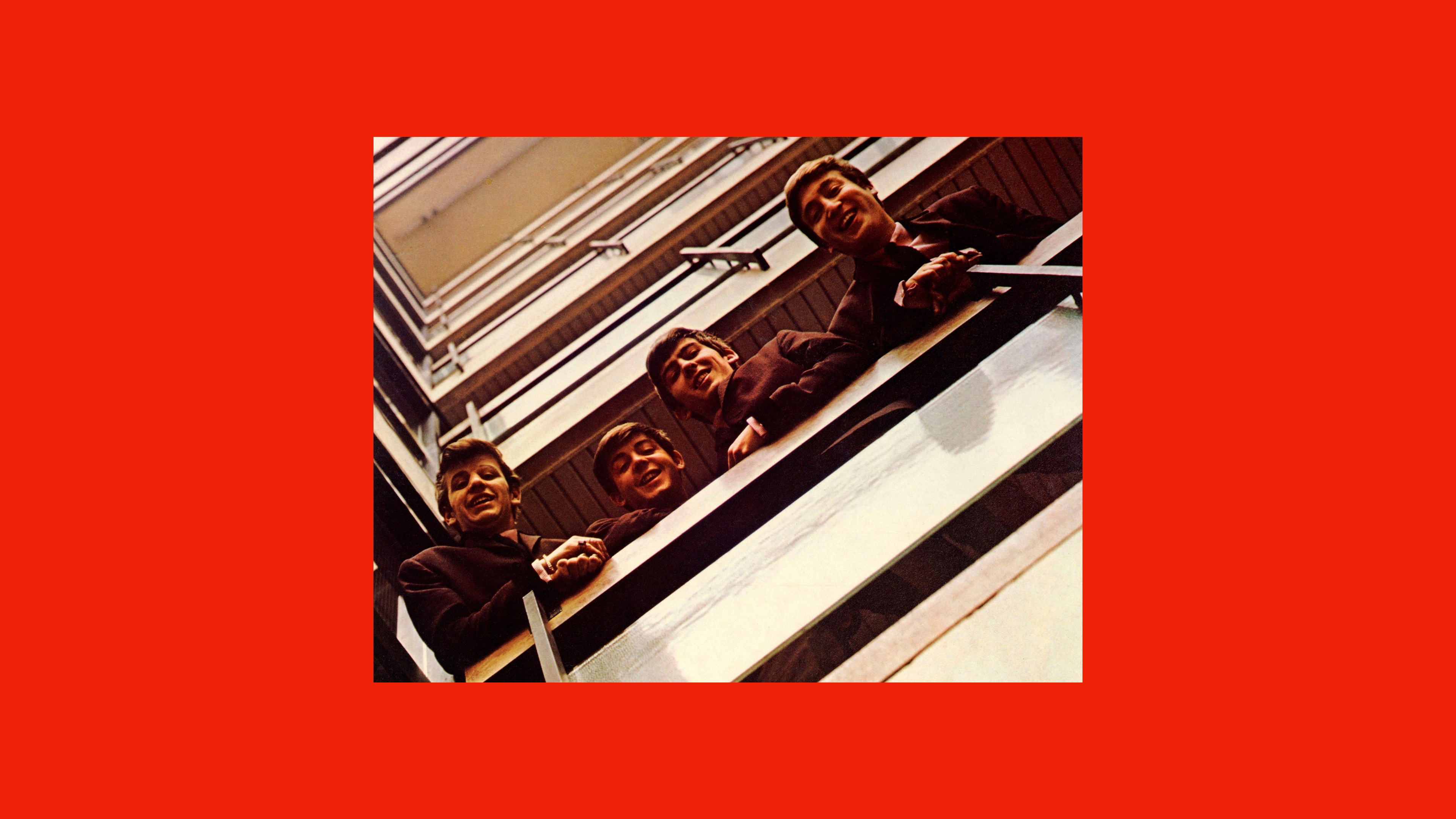
1962-1966
Love Me Do
Someone to love
Somebody new
Someone to love
Someone like you
1962
The Beatles developed and honed their live act at the Cavern Club in Liverpool, and built their first devoted following there. It’s estimated that between 1961 and 1963 the band played a total of 292 performances at the venue - usually at lunchtime.
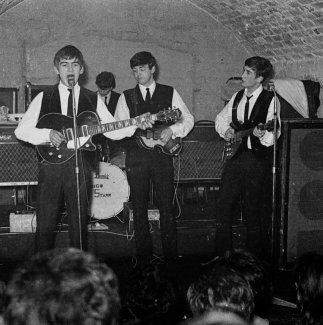
“The Cavern was sweaty, damp, dark, loud and exciting. As usual we didn’t start out with much of an audience, but then people began to hear about us. We could always entertain them. It became our strength later, whether playing live or making records - we always had something up our sleeve.”
PAUL
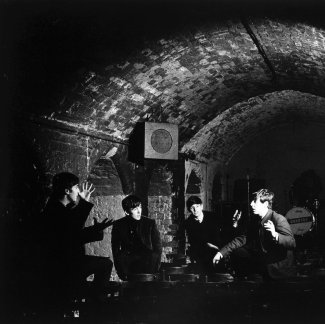
09.11.1961
In November 1961, at one of their Cavern Club lunchtime concerts, the band meet their future manager, Brian Epstein, for the first time.
04.06.1962
“I think George Martin felt we were raw and rough but that we had some quality that was interesting. We did ‘Love Me Do’, ‘PS I Love You’, ‘Ask Me Why’, ‘Besame Mucho’ and ‘Your Feet’s Too Big’, among others. (‘Your Feet’s Too Big’ was Fats Waller. That was Paul’s dad’s influence.)”
GEORGE
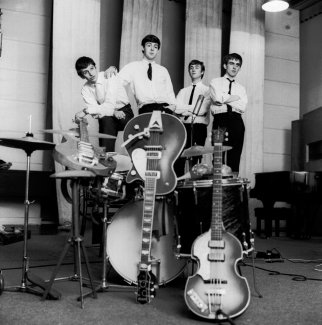
Parlophone Audition
The Beatles sign a contract with EMI and audition with George Martin on the 6th June.
05.10.1962
Written by John and Paul, the first Beatles single was released in the UK and reached No 17 in the chart. The B-side to the single was "P.S. I Love You". It was recorded on the 4th September 1962 at Abbey Road Studios.
Lyrics
Last night I said these words to my girl
I know you never even try girl
Come on, come on, come on, come on,
Please please me oh yeah like I please you.
1963
11.02.1963
The Beatles recorded ten of the tracks on their first LP in a single day at EMI studios in London. The album reached Number One in May 1963 and stayed there for thirty weeks - before being replaced by With The Beatles.
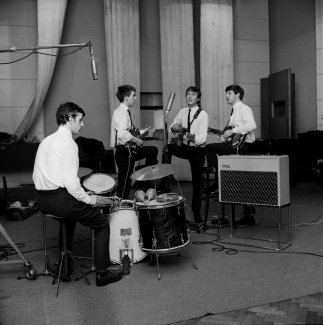
“Oh God this is it, a piece of plastic. And this piece of plastic was like gold, you know. You’d sell your soul to get on that little record”
RINGO

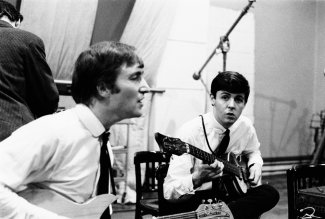
"We'd all said, 'Well what about this? What about this?', cos basically this album was just what we did live in the clubs."
GEORGE
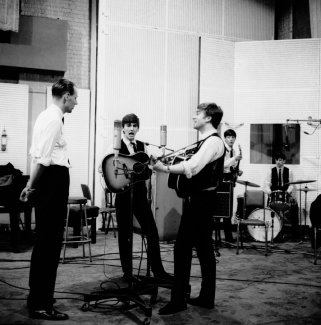
"John had to save Twist And Shout until the last, and he was sucking Zubes all day - those little throat tablets. and he finally had to do twist and shout knowing he had to do it last because it would just rip his throat apart to do it. it was great. you can still hear that on the record."
PAUL
Recording Please Please Me in a day
Playing for the Queen Mother at the Royal Command performance
In a couple short years the band had come a long way from The Cavern Club - in November 1963, they played the Royal Command Performance with the Queen Mother in the audience.
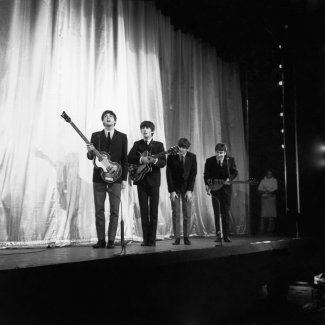
“The people in the cheaper seats, clap your hands. And the rest of you, if you'd just rattle your jewellery.”
JOHN
22.11.1963
With The Beatles carried on where Please Please Me had left off, melding more Lennon-McCartney originals with further highlights from their stage set. It also included the song-writing debut of their twenty-year old, Lead Guitarist, George Harrison.
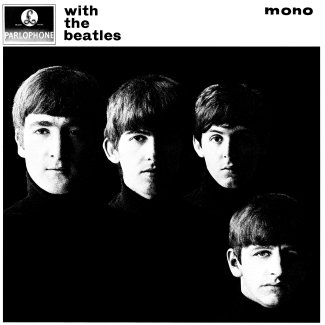
The band had to record their second release in-between other engagements that included concert tours, numerous radio and TV performances (including the prestigious Sunday Night At The London Palladium) and their first international tour to Sweden. It was around this time that the term "Beatlemania" was first coined. If that wasn't enough they also had to write, record and promote three new 45's all of which reached the no.1 spot in the UK charts.
In those days, the boys tended to rehearse for the recording as we did it. I would meet up with them, go through the material, and say, 'OK, what's the next one we're doing?' And we'd go in and rehearse a song and record it. It was like a workshop.
GEORGE MARTIN
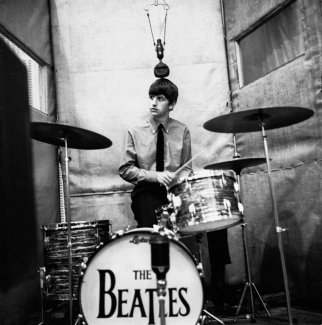
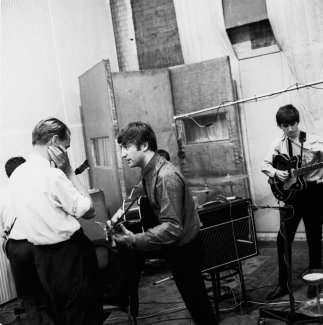
By the end of 1963, The Beatles topped the UK's Record Retailer chart with singles number 1 and 2; EPs number 1, 2 and 3; and LPs number 1 and 2.
With The Beatles is released
Can't Buy Me Love
I'll give you all I've got to give
If you say you love me too
I may not have a lot to give
But what I got, I'll give to you
I don't care too much for money
Money can't buy me love
1964
23.04.1964
In January 1964, the band headlined several concerts at the Olympia Theatre in Paris. It was the first time they were to stay in opulent hotel suites and was also where they heard the news of their first USA Number One with I Want To Hold Your Hand.
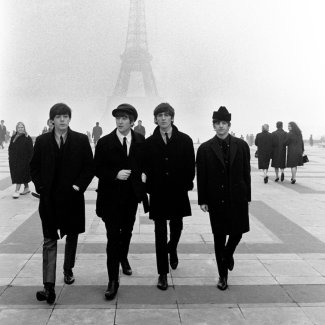
“One of the most memorable things of the trip for me was that we had a copy of Bob Dylan’s Freewheelin’ album, which we played constantly.”
GEORGE
“One night we arrived back at the hotel from the Olympia when a telegram came through to Brian from Capitol Records of America. He came running in to the room saying, ‘Hey, look. You are Number One in America!’ ‘I Want To Hold Your Hand’ had gone to Number One”
JOHN
The band perform 18 days of concerts in Paris, France
I Want To Hold Your Hand is Number One in the USA!
When I Want To Hold Your Hand reached Number One in the US charts, The Beatles became the first British act to have conquered America.
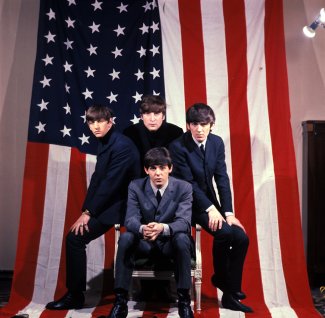
They celebrated this success with their first US visit - a two week tour in February 1964 that saw them make their historic Ed Sullivan Show appearance (and perform on two other Ed Sullivan Shows), play the Washington Coliseum, meet Cassius Clay (later to become Muhammed Ali), as well as charm the US public from New York City to Miami and beyond.
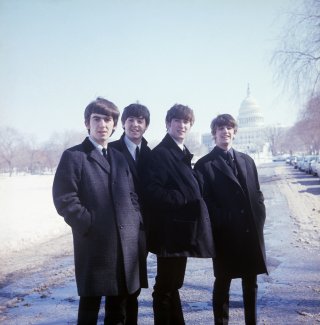
On the plane, flying in to the airport, I felt as though there was a big octopus with tentacles that were grabbing the plane and dragging us down into New York. America was the best.
RINGO
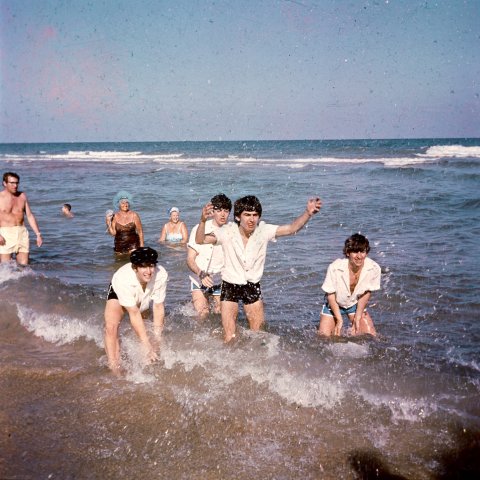
The Beatles go to the United States for their first North American tour
The band shoot A Hard Day's Night - their first feature film
Not much longer than a week after returning from their first US tour, the band began shooting A Hard Day's Night. The film has been praised as a benchmark for music film production - using documentary-style filming to capture the claustrophobia of Beatlemania and the quick-witted humour of the band. Comedy and music are combined to make the film a pastiche of a day in the life of The Beatles in 1964.
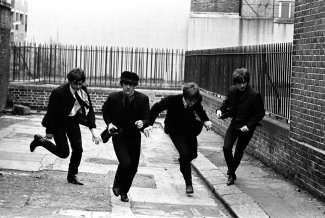
It was a great fantasy land for me, the movies, and suddenly we were in one. It was all so romantic, with the lights and coming to work in the limo.
RINGO
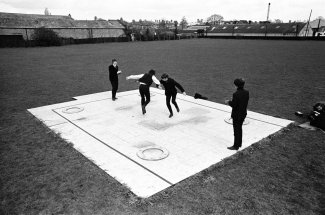
Alun (screenwriter) picked up a lot of little things about us. Things like: ‘He is late but he is very clean, isn’t he?’ Little jokes, the sarcasm, the humour, John’s wit, Ringo’s laconic manner; each of our different ways. The film manages to capture our characters quite well.
PAUL
Of A Hard Day's Night's13 tracks, seven were featured in the soundtrack of the film. This release also marks the first time on a Beatles album that all of the titles had been composed by John and Paul.
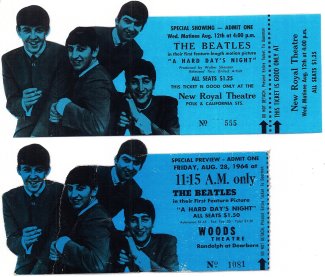
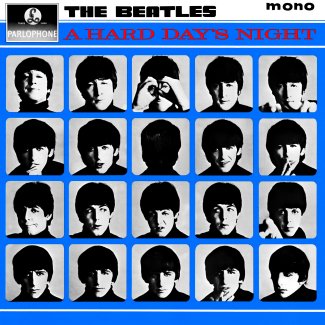
I think John and I wanted to do something bluesy, a bit darker, more grown-up, rather than just straight pop. It was more ‘baby’s in black’ as in mourning. our favourite colour was black, as well.
PAUL
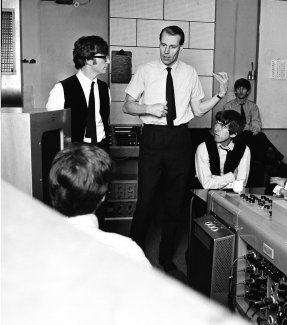
A Hard Day's Night is released
UK LP release of Beatles For Sale
With their schedule crammed with stage performances in the UK, Canada and the US, as well as radio and television work, Beatles For Sale saw the group reverting to the 1963 formula of eight original songs and six covers.
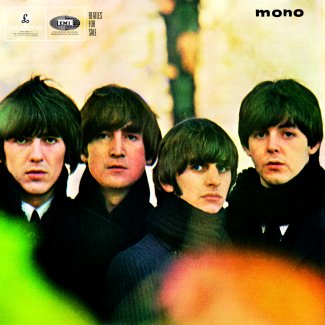
No single was released in the UK from Beatles For Sale - the non-album tracks "I Feel Fine" and "She's A Woman" were used instead.
I think John and I wanted to do something bluesy, a bit darker, more grown-up, rather than just straight pop. It was more ‘baby’s in black’ as in mourning. our favourite colour was black, as well.
PAUL
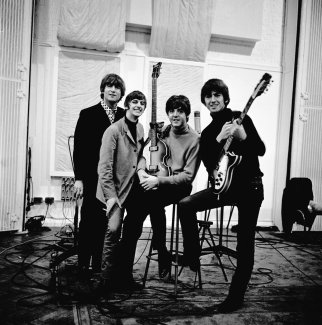
Norwegian Wood
I once had a girl
Or should I say she once had me
She showed me her room
Isn't it good Norwegian wood?
1965
22.02.1965
Filming for 'Help!'
In February,1965, the band began filming for their second feature film, Help! Shot in The Bahamas, Austria and the UK, the film combines the Beatles' own sense of humour with antics from a leading cast of actors including Leo McKern, Eleanor Bron, Victor Spinetti and Roy Kinnear.
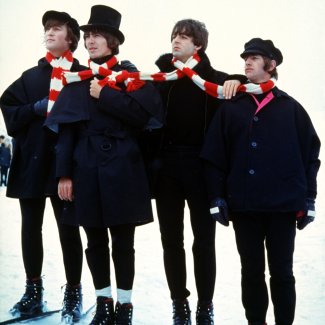
All the best stuff is on the cutting-room floor, with us breaking up and falling about all over the place, lying on the floor, incapable of saying a word.
JOHN
They took us to Austria, took us up a mountain, gave us our boots (that nobody even laced up), gave us our skis, said, 'Turn over, take one. Action!' - and gave us a push.
George
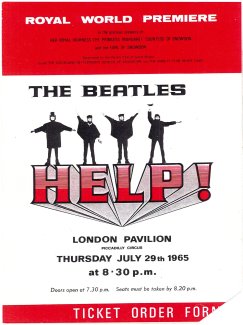
'Help!' premieres in London
Help! album is released
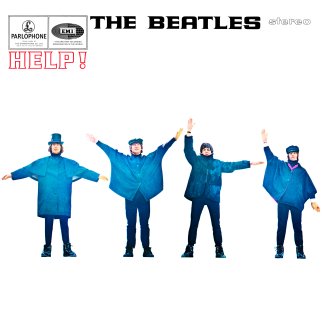
Like "A Hard Day's Night", "Help!" contained the songs from the film on side one of the album with the other side devoted to other new recordings including two covers. Unlike "A Hard Day's Night", the two singles released prior to and alongside the album had exclusive B-sides.
I used to like guitars; I didn't want anything else on the album but guitars and jangling piano or, or whatever, and it's all happening (...) It's a heavy record and the drums are heavy too. That's why I like it.
JOHN
The band have their first concert at Shea Stadium
When The Beatles played Shea Stadium in August 1965, it was the first ever major stadium concert and the biggest Beatles concert up to that time. Over 55,000 people came to watch this ground-breaking gig - the sound of which was completely dominated by the screaming audience. The huge number of security guards were kept occupied by fainting girls and fans attempting to reach the stage.
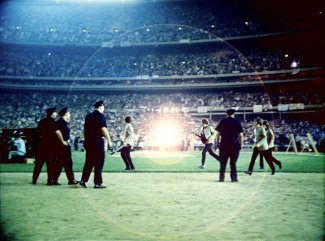
I never felt people came to hear our show - I felt they came to see us. From the first count-in on the first number, the volume of screams drowned everything else out.
RINGO
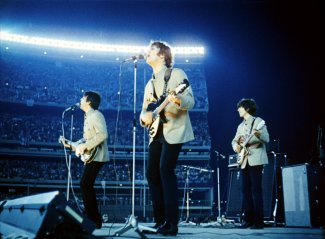
Receiving MBEs from the Queen
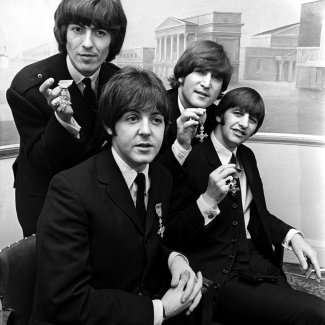
We were at Twickenham Film Studios one afternoon when Brian (Epstein) showed up and took us to the dressing room rather secretively. We wondered what it was all about. He said, 'I've got some news for you - the Prime Minister and the Queen have awarded you an MBE,' and we said, 'What's that?' - 'It's a medal!'
PAUL
Rubber Soul is released
"Rubber Soul" was released in the UK in time for Christmas and just two weeks after final mixing had taken place. It consisted of eleven songs by John and Paul, two by George and another with the unique writing credit of Lennon-McCartney-Starkey. The inclusion of a sitar on the song "Norwegian Wood (This Bird Has Flown)" also illustrated George's growing interest in Indian music and culture.
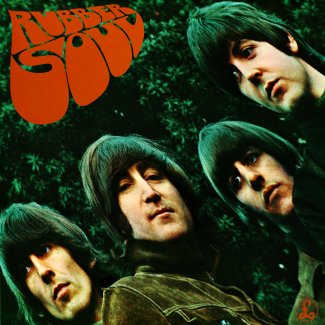
They were getting more and more interested in unusual sounds. They were trying out new instruments and always coming to me saying, 'What, what ideas have you got for this?'
GEORGE MARTIN
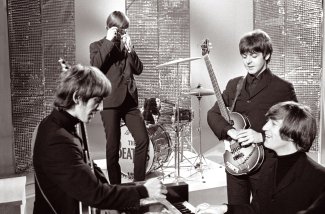
Our whole attitude was changing - we'd grown up a little.
RINGO
I'm Only Sleeping
Everybody seems to think I'm lazy
I don't mind, I think they're crazy
Runnin' everywhere at such a speed
'Til they find there's no need (there's no need)
1966
20.05.1966
Shooting promo films for Paperback Writer/Rain
In May, 1966, The Beatles created promo films for their upcoming double A-side single "Paperback Writer/Rain". Directed by Michael Lindsay-Hogg - who would later direct "Let It Be" - the promos were filmed in the grounds of Chiswick House, West London. Although shot in colour, they were broadcast in black and white when they were seen for the first time by audiences on BBC TV’s Top of the Pops.
The mania made it pretty difficult to get around, and out of convenience we decided we were not going to go into the TV studios to promote our records so much because it was too much of a hassle. We thought we'd go and make our own little films and put them on TV.
GEORGE
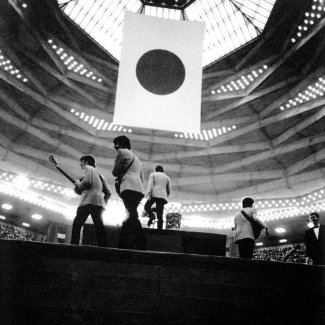
People were demonstrating because the Budokan (where we were playing) was supposed to be a special spiritual hall reserved for martial arts.
GEORGE
People go to Tokyo to go shopping, but we couldn't get out of the hotel. I once tried and a policeman came running after me. I did actually manage it, but he organised half the Tokyo police force to come with us. I had wanted to go and see the Emperor's palace, but the policeman wasn't too keen on the idea
PAUL
Playing in Japan
"Revolver" is released
Following a lengthy break - previously unusual for the band - The Beatles returned to Abbey Road to record continually for three months. Having longer in the studio paid off with even greater creativity and experimentation, and with John and Paul in fine form as writers. George also made his mark with three of his compositions appearing on a Beatles album for the first time.
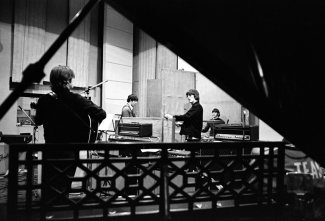
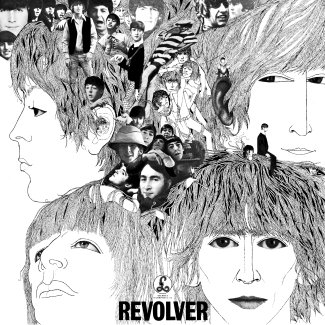
Paul and I are very keen on this electronic music. You make it clinking a couple of glasses together, or with bleeps from the radio, then you loop the tape to repeat the noises at intervals. Some people build up whole symphonies from it.
JOHN
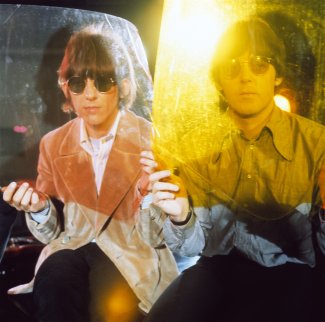
I don't know whether poets think they have to experience things to write about them, but I can tell you our songs are nearly all imagination - 90% imagination. I don't think Beethoven was in a really wicked mood all the time
PAUL
The band decide Candlestick Park will be their last gig
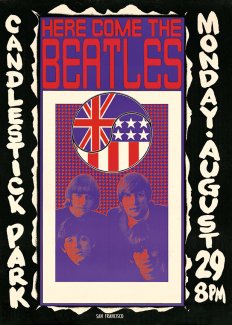
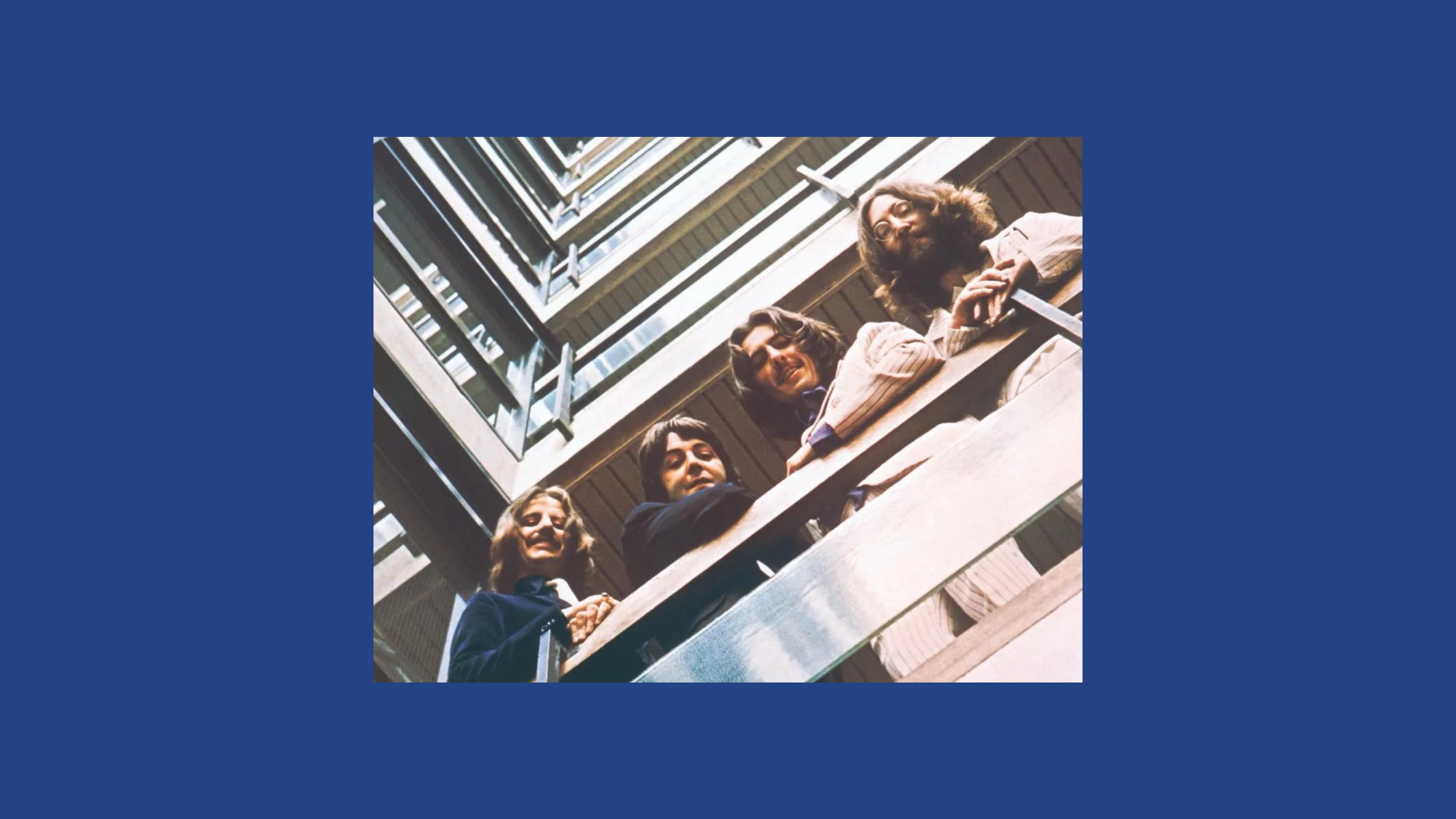
1967-1970
"Strawberry Fields Forever"
Living is easy with eyes closed,
Misunderstanding all you see.
It's getting hard to be someone,
But it all works out;
It doesn't matter much to me.
1967
30.01.1967
Shooting promo films for "Strawberry Fields" and "Penny Lane"
The band’s first release of 1967 was the double A side of "Strawberry Fields Forever" and "Penny Lane", for which they shot promotional films around Liverpool and Sevenoaks, Kent.
I don't think it was important to categorise the songs into A and B sides any more. We just felt: 'This is the record.' The other attitude was an old trap that people were put into when they made records.
RINGO
"Sgt Pepper's Lonely Hearts Club Band" recorded
Now that touring was behind the band, they could spend more time writing and recording and the result, "Sgt Pepper's Lonely Hearts Club Band" (The Beatles' eighth album) became the soundtrack to the 'Summer of Love'. Between November 1966 and April 1967, they spent over 400 hours in the studio - a far cry from their "Please Please Me" days. Of course the music was more complex and now that touring was over as there was no need to consider what could be reproduced in front of a live audience. In the studio, The Beatles encouraged George Martin to achieve "the impossible" and in turn, George and the engineers would find innovative ways of realising this despite still using only four-track equipment.
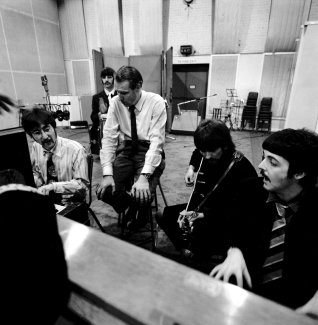
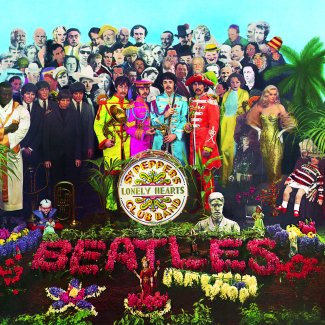
We would be Sgt Pepper's band, and for the whole of the album we'd pretend to be someone else. So, when John walked up to the microphone to sing, it wouldn't be the new John Lennon vocal, it would be whoever he was in this new group, his fantasy character. It liberated you - you could do anything when you to to the mike or on your guitar, because it wasn't you.
PAUL
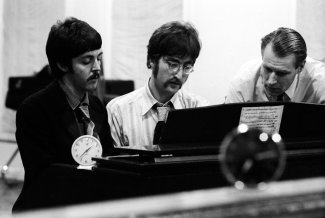
It took nine months. It wasn’t nine months in the studio, but we’d work then stop a bit, work it out, rest, work… (…) Generally, our other albums took three intensive weeks of work. Afterwards, we would slow down for one week, and then we could judge the whole thing. It was the most expensive (album) and, of course, the record company was screaming. They screamed at the price of the record cover, etc., etc. And now it’s probably pinned all over the walls.
JOHN
Our World TV Show is broadcast
At the height of the Vietnam war, Our World was broadcast. It was the first live multinational satellite TV production. 14 countries participated, with The Beatles representing the UK. The band chose to use the programme as an opportunity to deliver a poignant message - "All You Need Is Love".
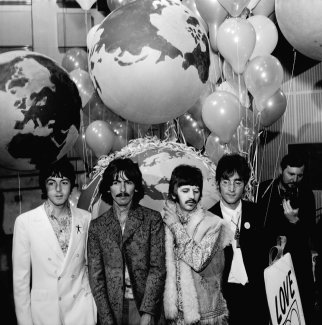
It’s a kind of subtle bit of PR for God basically.
GEORGE
Brian Epstein dies
In August 1967, Brian Epstein - the Beatles’ manager - passed away. The band found out the news whilst on retreat in Wales with the Indian guru Maharishi Mahesh Yogi.
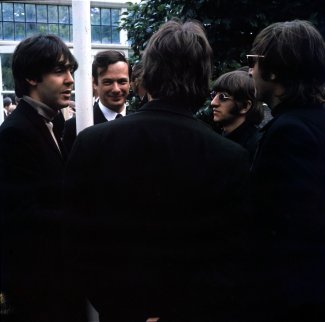
We loved Brian. He was a generous man. We owe so much to him. We have come a long way with Brian along the same road.
RINGO
Taking a "Magical Mystery Tour"
"Magical Mystery Tour" is broadcast on BBC television
In September 1967, the band embarked on their ‘Magical Mystery Tour’, journeying across England with a coach-load of actors and friends to make an improvised film with no real plan other than a basic storyline, a high appetite for fun, and lots of imagination.
We said to everyone: ‘Be on the coach on Monday morning.’ I told them all, ‘We’re going to make it up as we go along, but don’t worry - it’ll be all right.
PAUL
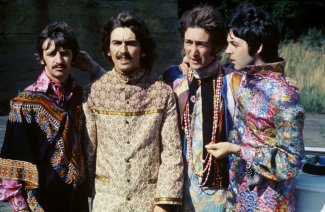
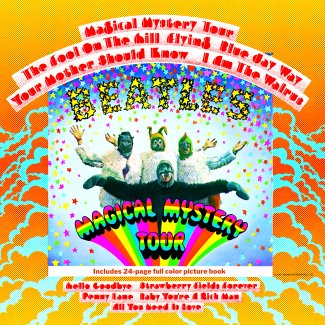
The press hated it. With all the success that we had, every time something came out (a new record or whatever), they'd all try to slam it; because once they've built you up that high, all they can do is knock you back down again. That's what happens. That's life.
GEORGE
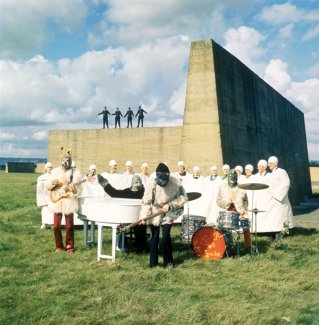
Magical Mystery Tour...one of my favourite albums because it was so weird: I Am The Walrus, one of my favourite tracks because I did it of course but also cos it’s one of those that has enough little bitties going to keep you interested even a hundred years later.
JOHN
"Magical Mystery Tour" film is broadcast on BBC television
"Blackbird"
Black bird fly, black bird fly
InBlackbird singing in the dead of night
Take these broken wings and learn to fly.
All your life
You were only waiting for this moment to arise
1968
15.02.1968
The band go to India
Early in 1968, The Beatles spent a transformative time in India. Whilst there, and studying Transcendental Meditation with the Maharishi Mahesh Yogi in Rishikesh, the band wrote many of the songs that would end up featuring on their ‘White’ album.
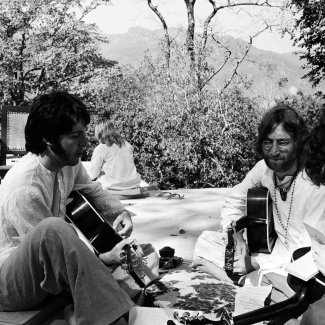
We were really getting away from everything. It was a sort of recluse holiday camp right at the foot of the Himalayas. It was like being up a mountain, but it was in the foothills hanging over the Ganges, with baboons stealing your breakfast and everybody flowing round in robes and sitting in their rooms for hours meditating. It was quite a trip.
JOHN
'Mad Day Out' photographic session
Taking a break from recording their upcoming 'White' album, the band had what's known as their ‘Mad Day Out’ photo session with Don McCullin in locations all across London: Gray’s Inn Road, Notting Hill, Highgate, Old Street, St. Pancras, Wapping and finally St. John’s Wood (where Paul lived).
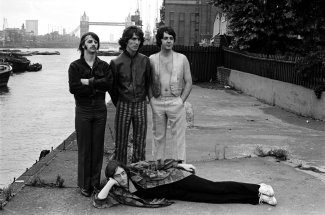
We were just hanging out. Just another day in the park for the Beatles boys.
RINGO
Filming "Hey Jude" promo
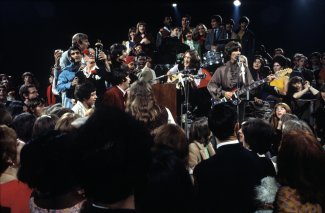
‘Hey Jude’ had been on sale in America for a week before they were able to record a video to promote it. They performed the song live at Twickenham Film Studios to an audience of around 300 local people who were asked to join-in for its finale. The resulting film, directed by Michael Lindsay-Hogg (who’d also directed the Paperback Writer and Rain promo films) was broadcast on the ‘Frost On Sunday’ show, 8 September 1968
Magnificent! A perfect rendition! Ladies and gentlemen, there you see the greatest tea-room orchestra in the world.
DAVID FROST
New York premiere of "Yellow Submarine"
The thing with the film that still blows me away is that in the first year it was out I had all these kids coming up to me, saying: 'Why did you press the button?' In the film I press a button and get shot out of the submarine - and kids from all over the whole bloody world kept shouting, 'Why did you press the button?' at me as if it was real. They actually thought it was me.
RINGO
UK LP release "The Beatles" (White album)
The Beatles or "The White album" as it became better known was released on 22nd November, 1968 on the fifth anniversary of their second album, "With The Beatles". A total of 34 new tracks were released in 1968 and 30 were contained on this one double-LP.
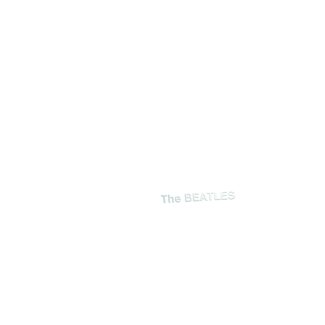
"The Beatles" (White Album) was the group's first album to appear on the Apple label. The change from Parlophone to Apple had first taken place with the release of the "Hey Jude" single in August.
Despite the fact that it was a double album it entered the UK chart at no. 1 and occupied that position for eight of the 22 weeks it spent in the chart. The US situation was even more impressive with a nine week stay in the top spot during an initial chart run of 65 weeks.
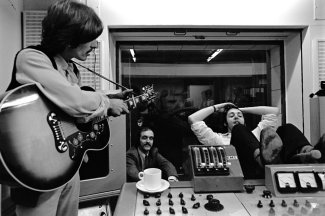
After Sgt Pepper, the new album felt more like a band recording together. There were a lot of tracks where we just played live, then then there were a lot of tracks that we’d recorded and that would need finishing together. There was also a lot more individual stuff and, for the first time, people were accepting that it was individual.
GEORGE
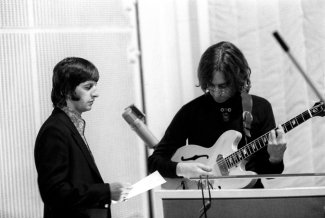
"Here Comes The Sun"
Little darlin', it's been a long, cold, lonely winter
Little darlin', it feels like years since it's been here
1969
02.01.1969
"Let It Be" film shoot
Directed by Michael Lindsay-Hogg - who had also directed the Paperback Writer, Rain and Hey Jude promotional films - "Let It Be" documents The Beatles ‘getting back to basics’ at Twickenham and at their own recording studios in Savile Row. It spans two weeks of recording of what was to be their final released album (in 1970), also called "Let It Be".
We were doing this rehearsal for a show which we never finished (...) There’s chatting and messing about and all sorts on it. And then we got halfway through another album so we stopped that, and we got tired and took a break. It’ll be a single LP - and we also made a film of it at the same time (…) All the traumas and the paranoia, all the different things that happen to you when you try to make a record.
JOHN
The idea was that you'd see The Beatles rehearsing, jamming, getting their act together and then finally performing somewhere in a big end-of-show concert. We would show how the whole process worked.
PAUL
In 2021, an original docuseries - "The Beatles: Get Back" - was released. Directed by Peter Jackson, it is made entirely from what was never-before-seen, restored footage from the original Let It Be film shoot. The series provides the most intimate and honest glimpse into the creative process and relationship between John, Paul, George, and Ringo ever filmed.
The band perform on the roof
Cover shoot for "Abbey Road"
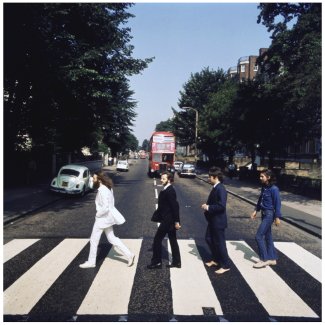
In August 1969, the band stepped outside EMI Studios, where they were recording their final (though not last-released) album and made perhaps their most famous journey of all - from one side of the Abbey Road zebra crossing to the other, for a photo shoot for the cover of their album of the same name.
I didn't notice on the day that (Paul) was barefoot. We were just wishing the photographer would hurry up. Too many people were hanging around. 'It's going to spoil the shot. Let's get out of here. We're meant to be recording, not posing for Beatle pictures.
JOHN
Tittenhurst photo shoot
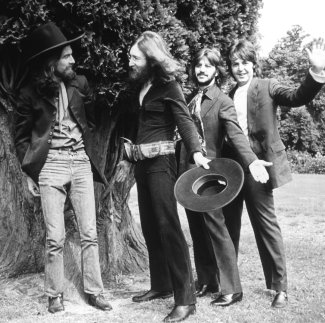
The Beatles’ last photo shoot took place in August 1969 at John’s house in Tittenhurst Park in Berkshire, UK. At the time, the band didn’t know it would be their last photo session together. Four days later, their album Abbey Road was released.
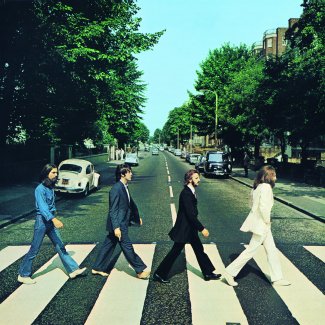
Following the 'live' nature of the "Let It Be" recordings, for "Abbey Road", The Beatles returned to the North London studios to create carefully crafted recordings with ambitious musical arrangements. Interestingly, 12 of the songs that appeared on the finished album were played during the filmed rehearsals and sessions for "Let It Be" back in January.
Abbey Road entered the British album chart at no.1 in October and stayed there for a total of seventeen of its 81 weeks in the chart. In the US, it spent eleven weeks at #1 during its initial chart stay of 83 weeks.
I think it shows on the record when we were excited. The track’s exciting and it all comes together. It doesn’t matter what we go through as individuals on the bullshit level; when it gets to the music you can see that it’s really cool, and we had all put in one thousand per cent
RINGO
UK LP release of "Abbey Road"
1970
UK LP release of "Let It Be"
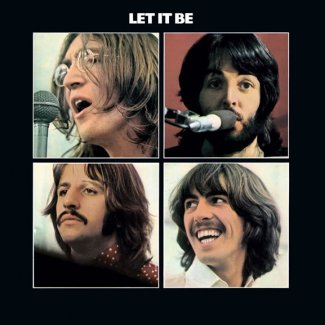
World premiere of "Let It Be" film in New York
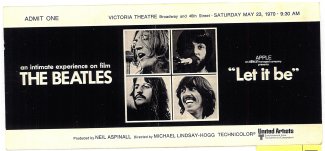
And in the end, the love you take, is equal to the love you make.
THE BEATLES
Share this website